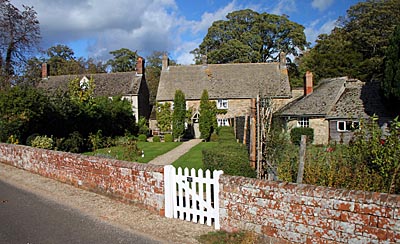 |
 |
|||
|
|
An estate called Cern is recorded as being given by King Edwig to one Cenric in a Saxon charter of 958. It probably lay in the parish of Pusey, as it twice touched the River Cerne from which Charney takes its name. It was assessed at two hides, and may be the estate of the same size which belonged to Abingdon Abbey at the time of the Domesday Book (1086). A Heathen Burial place is mentioned on its bounds & the name may be related to the Celtic God, Cernunnos. The first possessor of the ancient manor of Pusey was granted it by the tenure of a horn. Though asserted to be of the date of King Canute, the inscription is not Danish. It reads: Kynge Knould gave Wyllyam Peuse thys horne to holde by thy Lande. Tradition says the first recipient, obtained it from the great Dane in person. The King is said to have had a residence at Cherbury Camp (Charney Basset) in the 11th century. It was to here that a group of opposing Saxons set out from Uffington Castle. William Pusey was a young shepherd boy who saw the men marching across the Downs and warned Canute and his army of the ensuing ambush by blowing his horn (See Gainfield). He was rewarded with a commission in the King’s Army and all the land within the sound of his horn. King Canute had the instrument inscribed and otherwise embellished and returned it to William as proof of his gift. The Puseys held Pusey until 1710, when they died out. Several families changed their name to Pusey in order to inherit Pusey House and its estate, until both horn and manor were finally sold off in 1933. The Horn can now be seen in the Victoria & Albert Museum. The most famous Pusey was the great scholar, Dr. Edward Bouverie-Pusey. He became a leading member of the Oxford Movement but, unlike many of his fellows, did not turn to Catholicism but helped prevent large-scale desertion of the Church of England. There are mementos of him in the parish church: one of the few 18th century churches in Berkshire. The previous building had a resident anchorite in the 12th century. |
|||
| © Nash Ford Publishing 2001. All Rights Reserved. This location is now administered by Oxfordshire County Council. | ||||



 Pusey
Pusey